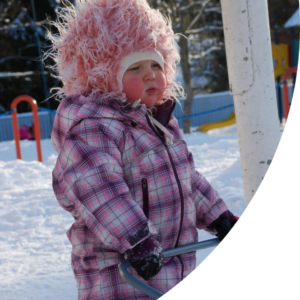Contact:
melina.rauhala@visitedufinn.com

Text and photos by Piia Roos (teacher of early years, PhD, pedagogical expert in VisitEDUfinn)
Comparing policies and practices in different countries stimulates your critical thinking and opens new perspectives by provoking questions. The bigger the differences are the better it works. But comparison can also be dangerous in a way, because if you ignore the context you might do misinterpretations and unwarranted generalizations. (Johansson & Moss 2012.)
An old saying goes: “Not to see the forest from the trees”. Like you might know, it means that if you only concentrate on specific details on a certain matter, you won’t see, or understand, the entity. That’s why in order to learn from Finnish educational system, or from any other foreign system, you must challenge yourself to understand, at least partly, the culture and history behind the system. In other words, you need to understand the foundation, before you can understand the practical side or specific details. These details can be never adopted as they are. They just won’t fit. You have to interpret and modify them through your cultural lenses. Evaluate, what could be suitable to your own teaching methods and education in your home country in general in the light of your own culture and history.
Janniina Vlasov, my friend and colleague, reflected early childhood education in three different countries (Finland, Russia and USA) in her theses. According to her, pedagogy emerges and develops always as a part of wider social and cultural context. When getting familiar with different educational systems, it’s not about compering them to one and another. It’s not about better and worse. What comparing policies and practices in different countries is about, is that it stimulates your own critical thinking and challenges you to understand your own education, and culture, in a deeper way. (Vlasov 2018.) It helps you to see, what are the strengths and what should be developed. 
Likewise to learn from Finnish early childhood education and pedagogy as it is, you should first get to know some facts about the tradition behind it. The first Finnish kindergarten teachers were trained in Germany and that’ s why the roots of Finnish ECE are in Froebelian pedagogy. The first kindergarten was established in 1888, when industrialism was growing fast in Finland and families moved to the cities from countryside. The main point was to offer children a fruitful learning environment, but also to take care of their basic needs while the parents were working. At the beginning ECE was seen as a social welfare benefit, but nowadays child’s right to ECE is emphasized and the impact that ECE has for children’s wellbeing and learning is stressed out.
In Finland, every child has a right to universal entitlement for ECE. The weekly hours depend on the labor or study status of the guardians, while the minimum is 20 hours per week. Compulsory pre-primary education for 6-year-old children is seen as a part of ECE and extent is 700 hours per years (5 days/week, 4hrs/day).
Then few words about the core values and goals of Finnish early childhood education. In Finland we believe in soft values, so to say. We really emphasize the interaction and building up close relationship with each child. After the relationship is working, also the teaching and learning is easier, like we all know. In addition, teacher’s relationship with the children and emotions towards the children effects all interacting and learning in the class. Like it is said in Finnish Core Curriculum: “Children learn the best when they feel well and secured. Positive emotional experiences and interactive relationships promote learning. (2018, 23).” In daily basis a lot of time is invested in mundane interaction, which makes it possible to really get to know children; who they are, what are they interested in, what would they like to learn, what are their strengths and needs.
The other value, which Finnish ECE pedagogy strongly leans on, is equity. Before the basis of pedagogy was more or less in equality. Offering similar opportunities, activities and instructions for all children were ensured in many ways. In addition, it was a point of honor to ensure that the rules were the same for everyone. What has chanced from those days is the fact, that we realized that the needs of individual child weren’t considered enough. The fact is, that if we demand the same thing from every child, the level of goals or expectations are in line with the skills and needs of some children, but for some else they aren’t. I could be said, that in fact the more developed form of equality is equity, even though both are needed. It means that we have to start implementing the pedagogy, which meets with the different needs and skills of different children and moves away from the pedagogy, which faced the children as a unit group. As a homogeneous group, that doesn’t even exist, as we all know. There is a need of variation in pedagogy. We as adults, and teachers, are in the key position. We should focus more on ourselves to change the way we are teaching and the learning environment to meet the different needs of individual children better. Not to demand the individual child to change to fit into the environment or our instructions. This connects strongly with the principals of children’s participation, which is the red line in Finnish Core Curriculum.
Finally, I would like to point out two important principles, which guide the everyday life in Finnish kindergartens strongly: learning through daily routines and every day is a play day. In Finnish kindergartens learning and teaching are connected to the children’s natural ways of acting. There are a lot of playing, physical activities, exploring and self-expression. In Finland, a positive attitude towards learning, as well as learning to learn skills, are seen more important than the actual learning outcomes. So, it is more about the process, not the results. Push for academic skills before compulsory education is marginal.
The Finnish early childhood education system (ECE). It is a system, which integrates education and care. Daily outdoor activities, healthy diet and adequate rest are seen to form the foundation for children’s growth, development and learning. Basic care situations are seen as valuable learning situations. Like every day is a play day, every moment is a learning moment. In Finland we talk about all-day pedagogy, by which we mean that each mundane moment offers opportunities for children to learn. The basic care situations are utilized from educational and pedagogical point of view. Concept EDUCARE reflects this idea and is the cornerstone of Finnish early years pedagogy. That’s why we Finns like to speak about early childhood education and care (ECEC), instead of ECE.

I have been privileged to meet many educational experts from other countries while they have participated in study tours and events organized by VisitEDUfinn. I have also had an opportunity to visit other countries and the local kindergartens and schools there. Leaning on these experiences I agree on what is said above without questioning; it is always about learning both ways

Dr. Piia Roos (teacher of early years, PhD) has over 10 years of experience as a teacher and a leader in Finnish ECEC centers. For the past 10 years she worked as a teacher in vocational college for practical nurses majoring in early childhood education. Now Roos works as an educator and consult through her own company. In addition, she is a visiting lecture at Tampere University of Applied Science, and a partner and pedagogical expert in VisitEDUfinn Ltd. Her special interests are children’s perspective and participation.
Ms. Rauhala (B.A.) is an educational sciences student at the University of Turku with studies also in the fields of psychology, business and HR, and sociology. As an education major, she is passionate about lifelong learning and the Finnish education system. She believes in change through education. In addition, Ms. Rauhala loves to learn new languages. She completed an Erasmus + university exchange in Spain as a part of her studies and wants to work toward everyone getting international learning opportunities. Ms. Rauhala is working for VisitEDUfinn part-time while finishing her studies.
Contact:
melina.rauhala@visitedufinn.com
